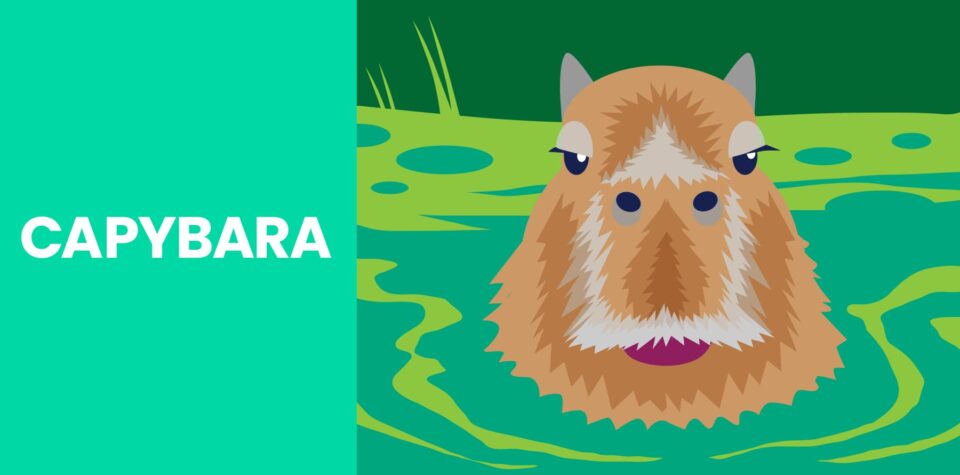
The Capybara
The capybara is an animal that lives near the rivers and lakes of South America and Central America, but it’s famous around the world. That may be because capybaras are so adorable! They can be found in many North American zoos, and zoos in Japan have made a splash by giving capybaras special yuzu baths on the winter solstice.
What Is a Capybara?
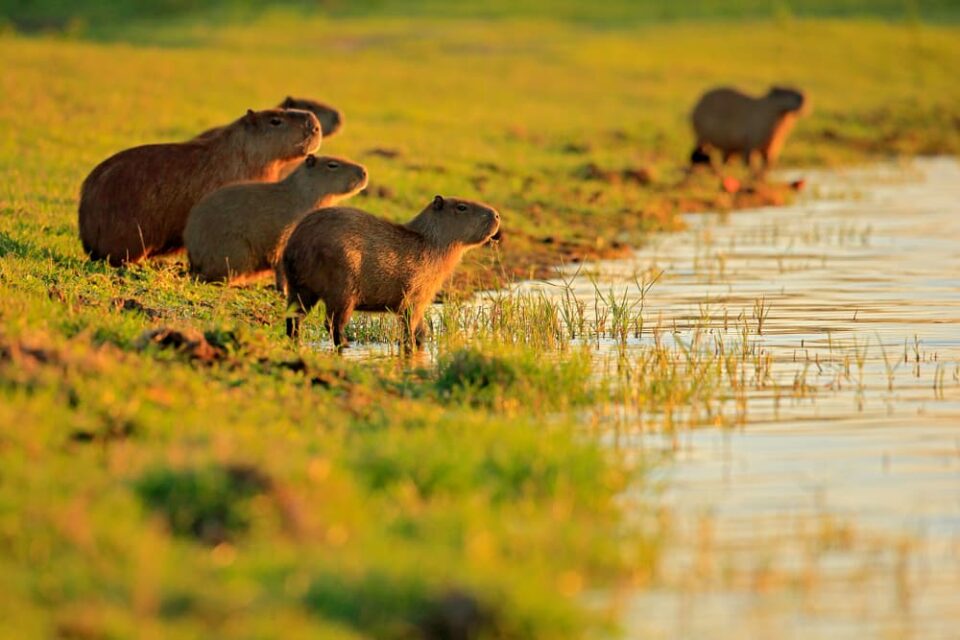
There are actually two species of capybara: the regular capybara and the lesser capybara. Both species are large rodents that live near water. Regular capybaras can grow over four feet long and weigh almost 175 pounds. Lesser capybaras are smaller but still very big for rodents, growing up to about three feet and 60 pounds.
Although all capybaras are rodents, they don’t look much like rats and mice. Like guinea pigs, they have short legs, small ears, and blunt snouts. They also love water! They’re sometimes compared to hippos because of how close they live to water and the way they dive into it to avoid predators.
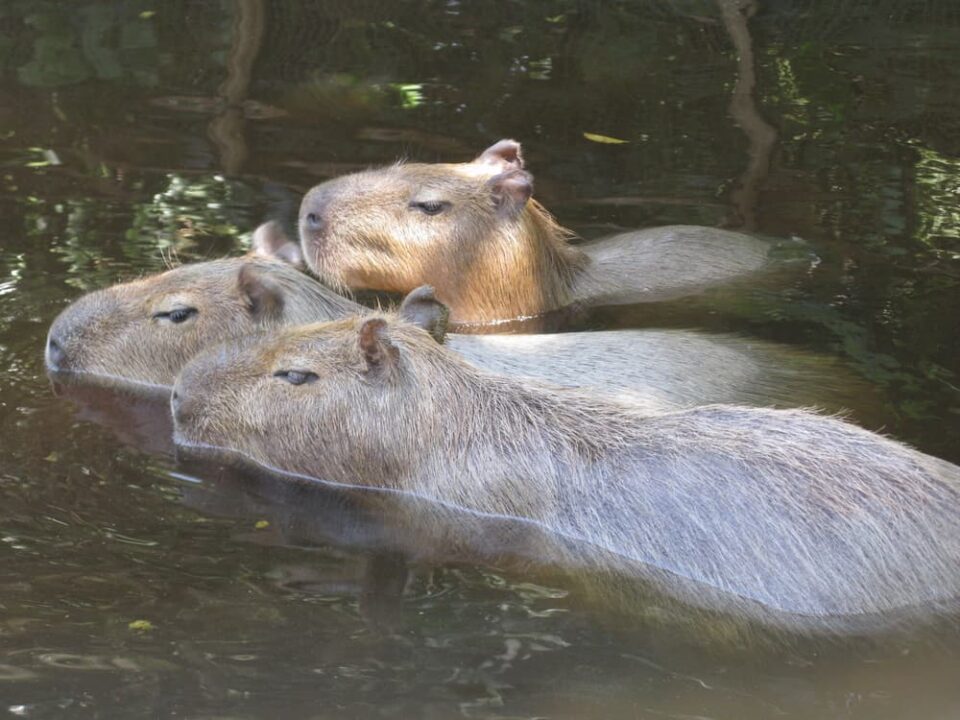
Capybaras are great swimmers. They have webbed feet to paddle and can hold their breath for up to five minutes, allowing them to swim away from danger. They’re also very good at floating with their head poked out of the water so that they can breathe through their nostrils and keep watch for danger.
What Do Capybaras Eat?
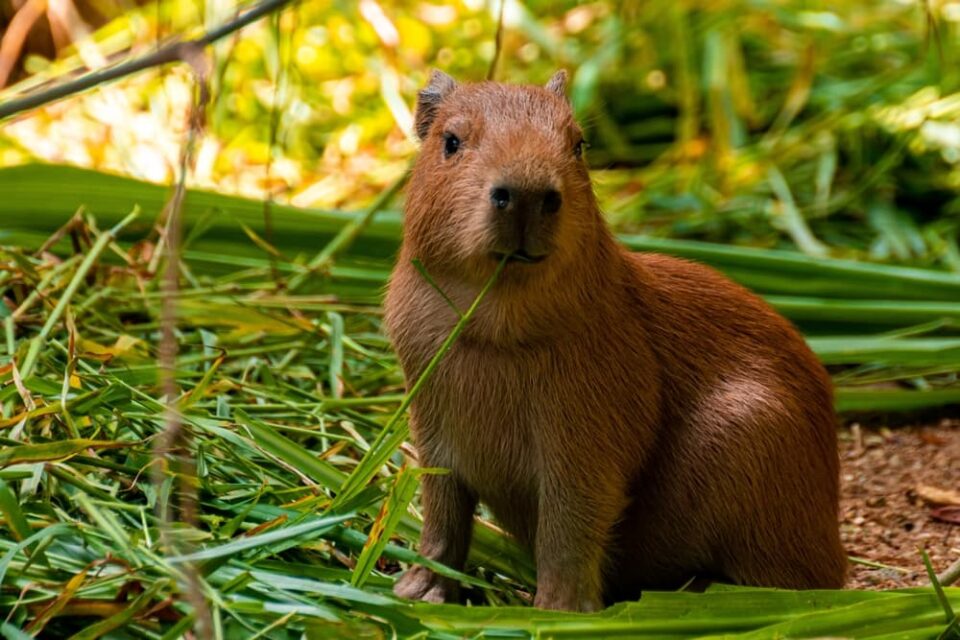
Capybaras only eat plants. In fact, most of the capybara’s diet consists of just a handful of plants. They prefer to eat water plants and grass when they can get them, but they’ll also eat grains, reeds, squashes, and melons. Most of the time a capybara eats a big breakfast, then rests during the heat of the day and comes out again for dinner in the evening.
Like other rodents, capybaras have big front teeth that never stop growing. They use them to cut up and grind their tough food, which they go through a lot of. Adult capybaras eat up to eight pounds of grass every day!
Do Capybaras Really Eat Their Own Poop?
Yes! Capybara poop has bacteria in it that helps the animals’ digestion, so capybaras eat it to keep their stomachs healthy. Capybaras also regurgitate their food like cows, bringing it from their stomachs back into their mouths so they can chew it some more after they’ve swallowed it. This helps them break down the tough fibers in the grasses and plants they eat.
Where Do Capybaras Live?
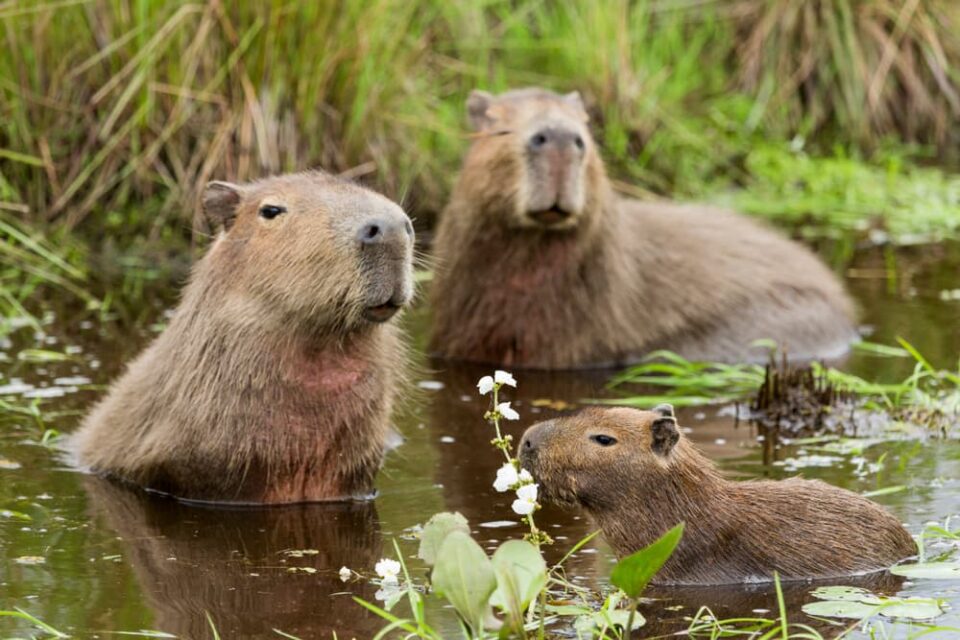
Capybaras need a permanent source of water nearby to keep their skin from drying out, so they live on riverbanks and lakeshores in their Central and South American habitats. Regular capybaras live in South America from Venezuela to Argentina, and lesser capybaras live in Central America and the northwestern parts of Venezuela and Colombia.
As long as an area has the things they need to survive—water to swim in, grasses and plants to eat, and a place to shelter during the day—capybaras can live there. Their natural range between Panama and Argentina covers thousands of miles full of rainforest, swamps, grasslands, wetlands, and more. They prefer remote locations far from humans, but if you’re on a waterway looking for animals in the Amazon, you’ve got a shot at seeing one!
Are Capybaras Friendly?
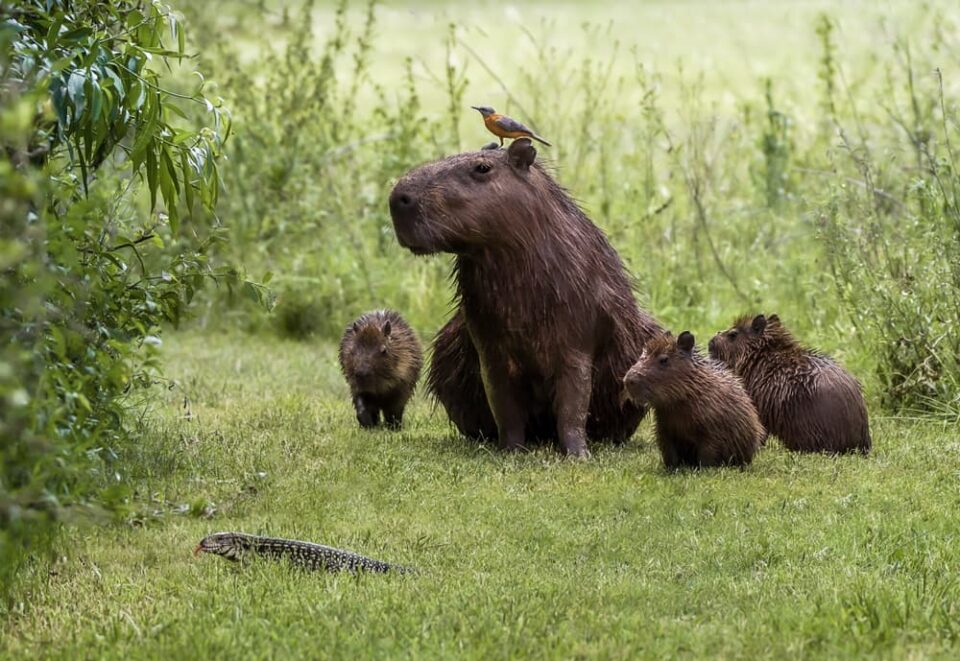
Capybaras are very friendly animals. In the wild, they live in family groups of 10 to 40, depending on the time of year. Being in those big groups helps keep them safe from predators, because there are a lot of adults to watch the capybara young. They communicate with barks if they discover danger or when rounding up their offspring.
Capybaras outside the wild also seem to get along very well with other kinds of animals. They’ve been seen befriending humans, cats, ducks, tortoises, deer, goats, and all kinds of other animals!
Together Time
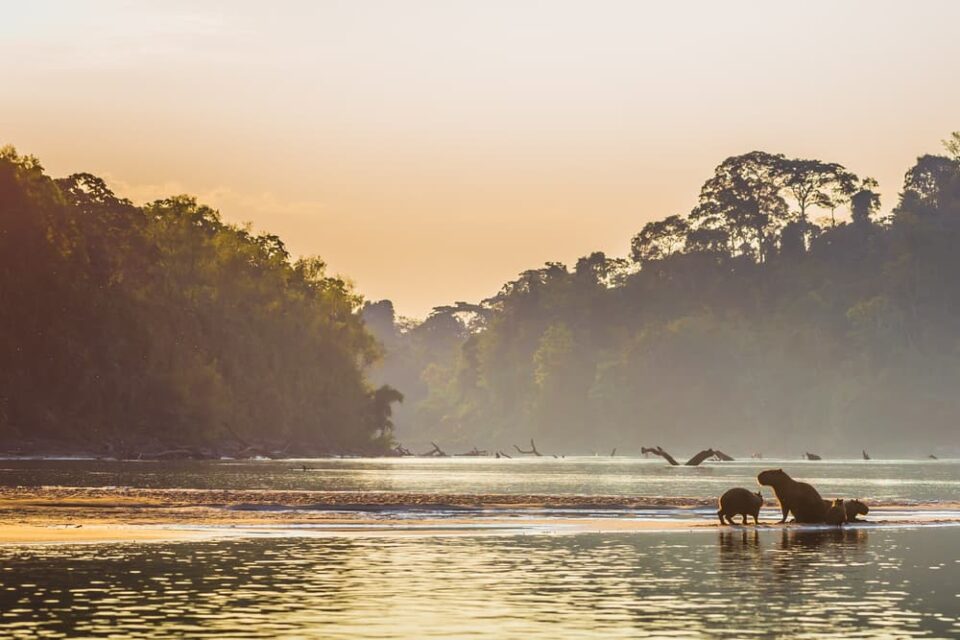
Many capybaras live near rainforest waterways alongside beautiful butterflies, slow-moving sloths, and other incredible creatures. Check out our free Animals Wild rainforest activities and celebrate the wonderful diversity of rainforest ecosystems around the world with your family.
